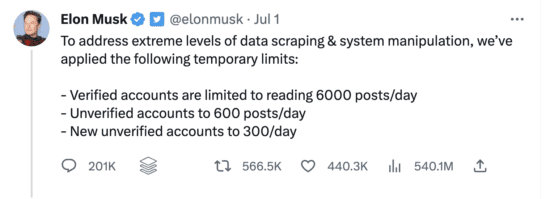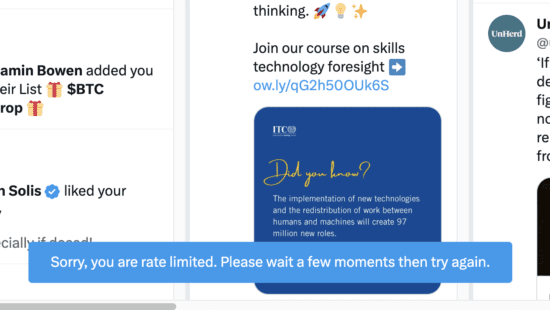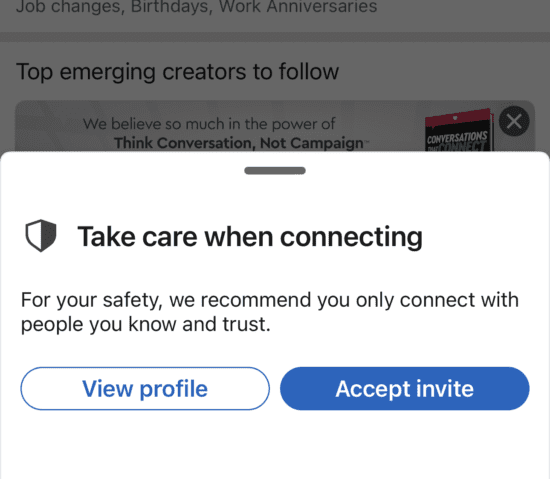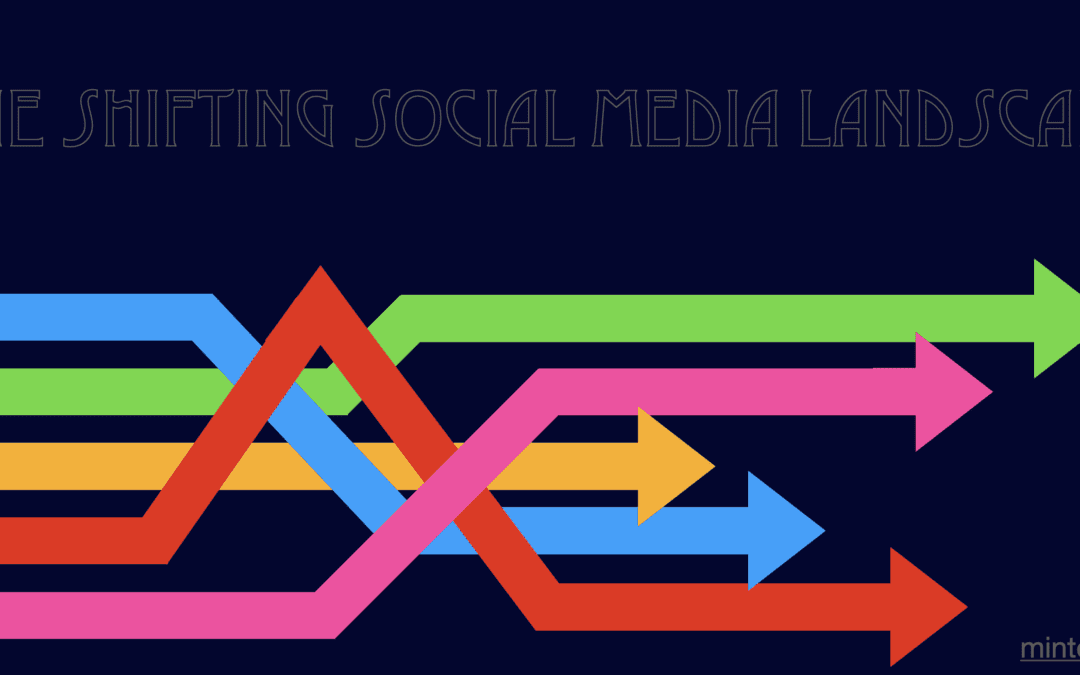While most of the buzz (aka hype) in tech over the first half of 2023 was focused on artificial intelligence and the explosion of large language models (ChatGPT, Bard and Co.), it’s clear that social media has been evolving in noticeable ways as well. Taking a 35,000-foot view, it seems that we’re in the midst of a possible turning point. In 2023, we’re one year shy of the founding of Facebook. The Gen Z is coming of age and starting to file into business. The Baby Boomers are closing in on retirement (and grandparenthood). Further, having gone through a pandemic, seeing war on Europe’s doorstep and worrying about the economic outlook, people are perhaps less interested in the trite and frivolous.
Clearly, given the plethora of choice, if you’re online, pretty much everyone is on one or other social media network. With data from April 2023, Datareportal collated research from a number of sources, showing:
- the world’s population has crested over 8 billion
- 5.2 billion people use the Internet, and
- 4.8 billion people (93% of all Internet users) are on social media. [Source].
According to GlobalWebIndex, the average daily usage of social media is 2 hours and 24 minutes, down modestly from the year before. Interestingly, time spent on the Internet has also declined a fraction, aided possibly by the faster Internet connections? In any event, suffice it to point out that we still are spending over 6 hours on average online per day and social media remains a big part of that. Meanwhile, as Mark Schaefer has cogently argued in his blog post on BusinessesGrow, there is little to support the relationship between social media engagement and business returns (e.g. increased loyalty, customer acquisition, or gains in sales). To the extent most social media is running a pay-to-play model, where “organic” or free engagement is being squeezed by ever tighter algorithms, there is little magic or fantasy in how to get your message heard via the social media channels. Certainly, they are not to be ignored, but I’m more of the mind that there’s more to lose by not being on social media than there is to gain in spending money on social media visibility. And that’s especially true if you don’t go at it with the right mindset. At a high level, this means that brands need to be focused on providing content that is legitimately interesting to its public, original, personable, beneficial and, typically, visual.
So what’s changed in our usage of social media?
#RIP Twitter?
Twitter is undergoing a major overhaul under the leadership of its new and disruptive owner, Elon Musk. Aside from the massive layoffs, the first visible step for the users was the end of ‘free’ blue tick as a signal of a verified person to the monthly subscription (currently at $11/month) to own a blue tick, which provides a series of ‘value adds’. There’s been the return of certain ‘cancelled’ invidivuals as well (notably @therealdonaldtrump, Jordan Peterson, Kathy Griffin and Babylon Bee), in a quest to return the notion of ‘freedom of expression’ back to the platform (see CBS news). The way the algorithm is being worked on is anyone’s guess, but presumably it’s been tweaked to favor paying consumers and the advertisers. The most recent change involves ‘temporarily’ limiting the number of visible posts to free ‘unverified’ accounts: presently to 600 posts per day, although it’s said they’ll bump it back up to 800 or 1000 per day (feels like that will depend on Elon’s mood). Here’s how Elon announced it, himself:

As Elon pointed out without a little irony, this tweet garned over 540 million at time of writing, an all-time record number of views for a single tweet.
As a result of this move, heavy Twitter users will rather quickly see a message like this (on my Tweetdeck):

In other words, Twitter is really moving toward a pay to use model. Oddly, I note that I didn’t get the same message while on my mobile app (for the same account). To say that I probably viewed two dozen tweets during that day shows how absurd such a limit is (in terms of implementation). While the aim of this change was purportedly to stop large language model systems draining Twitter for its content to feed the learning database, it’s obviously designed to impinge on heavier users, of which I am one. Ever since Musk took over, many people have announced they’re quitting the platform. There’s been a trendy hashtag of #RIPTwitter as well. For sure, it’s undergoing the most monumental seachange in its 17-year history. With its 400 million users (238 million daily active users in 2022), it’s obviously still a player, but with Meta to launch its Twitterlike platform, Threads, tomorrow, and some rekindled interest in an alternative such as Mastodon (noting that it has less than 3 million users), it will be fascinating to follow how Twitter keeps its popularity — especially among the media — all the while trying to make money.
The mega (not meta) FB Dinosaur?
Facebook keeps chugging along, with close to 3 billion users. I’ve removed the Facebook app from being visible on my mobile, but still use Messenger quite a bit. It’s hard to jettison Facebook entirely, but between the ads that interfere in your personal thread and the paltry numbers that any of my posts get, it feels like a general waste of time to bother posting there. None of my business-oriented pages are providing any organic benefit. Surely, I’m not posting sufficiently exciting or engaging stuff. Nor, as some others might promote, am I about to render my business posts as personal as on my personal Facebook page. I’m quite close to abandoning any posting. But I’m still happy to keep communicating with friends around the world on a 1-2-1 basis on Messenger.
Revealing the truth about authenticity and transparency?
BeReal. This independent social media app, launchd out of France in 2020, was designed in some ways to be the anti-Instagram, with unfiltered, spontaneous images that showed each user in their specific, immediate and usually mundane context. The idea was to encourage greater authenticity. The app was in crescendo form in 2022. However, we’ve seen that interest has fallen off. As reported by the NYT, “The [BeReal] spell seems to have broken. Some users have discovered that seeing the monotony of their own lives reflected back at them is compelling for only so long.” In a world that is constantly calling for transparency and authenticity, it is ironic that BeReal isn’t sticking. The app has dropped 61% from its peak usage in October 2022. Meanwhile, it feels evermore clear that calls for transparency are always a tad political.
Keep to your niche
LinkedIn. LinkedIn is a rather steady horse in the social media race. Given its singular focus on business, it remains a highly useful tool for anyone working. It’s very useful for doing preliminary background checks and the content remains generally serious. For those looking for a job or recruiting, it’s indispensable. And for those networking, it’s a also good tool, although I continue to be surprised, if not annoyed, by the incessant barrage of spammy connection requests from complete strangers, such as these two requests below:


I have long written that your LinkedIn network ought to reflect the way you operate in real life. In other words, you ought to connect ONLY with people you know and trust. Here is the latest article I wrote:
Which is why I was quite pleased to see LinkedIn itself provide the following warning/instruction, although the incitement was only for your “safety” as opposed to appropriate networking:

“Take care when connecting. For your safety, we recommend you only connect with people you know and trust.”
The fact of the matter is that, just because you have a connection in common (a so-called “second” level) is no guarantee that your shared connection trusts, much less knows, that person. Would you accept to give your details to anyone? Why on Earth do people do the same on LinkedIn?
Community and utility?
TikTok. TikTok is known for its short-form, vertical videos. The platform’s algorithm favors videos that are visually appealing and engaging, and that can be easily consumed in a short amount of time. Popular types of content on TikTok include dance challenges, lip-syncing videos, comedy sketches, and DIY tutorials. Growing at a faster clip than its most similar rival, Instagram, its user base is predominantly younger, with 60% of users being under the age of 24. In terms of geography, the platform is more popular in Asia, with China, India, and the United States being its top three markets. The fact that it is owned by the Chinese company, Bytedance, makes it the subject of much political debate in the US. However, it’s worth noting that TikTok provides a more educational flavor to it (than Instagram).
Instagram. Owned by Facebook’s parent Meta, remains popular and, like Facebook, has a pretty diverse base in terms of ages and demographics. I’ve long remarked that, despite having a similar number of followers as my daughter, each of her posts get 10x the interactions as mine. The micro-communities are where it’s at on Instagram. Meanwhile, if the main thread on IG is littered with promoted posts and ads, I’ve found myself scrolling endlessly down Reels and enjoying the diversion. These are, as yet, uninfested with ads. But that will surely come soon enough.
Video, audio and AI
In terms of the dominant format, it’s obvious that images and moving images (i.e. video) are the big winners of social media engagement. YouTube remains the behemoth in this category, but the reels in Instagram, TikTok and Facebook are drawing the lion’s share of the attention. Meanwhile, the great rush to audio — e.g. Clubhouse or Spaces on Twitter — has kept a loyal audience. For many, I’ve seen that these audio spaces are the only way some get to connect with likeminded folk. The moderation of these spaces is hit or miss, but clearly there’s a demand. I’m not sure about the business models though. And, finally, it’s obvious that the aforementioned AI will play a HUGE role going forward. This will be in the way that the algorithms are programmed, but also as brands — not to forget states and malevolent actors — will use generative AI to create content à la va vite… I’m sure that social media will remain an intensely interesting space AND a keen way to observe our society, with all its warts. Surely, social media will continue to play a role as a media and, in this, hopefully provide a way to keep a distinct and independent voice from mainstream media and heavy-handed government.
Conclusions for business
For any executive in business (or entrepreneur), here’s my cheat sheet to follow for the intermediate future:
- Keep a presence by grabbing the most consistent handle in each of the media. When Threads launches, for example, grab your preferred handle.
- Dedicate time and energy only the media where your target market is. If you have a very wide target, focus and invest only on the most strategic areas.
- If you’re on Linkedin, make sure to manage your own network as if it were IRL. Interact with personality and create truly interesting content that provides value for your gang.
- Be wary of social media agencies who will sell you a pipe dream on social. Per Mark’s post, the ROI of social is hard to find or justify. I tend to ward off the idea of delegating your personal profile to a third party. Outside of lacking authenticity, it means you truly won’t understand what’s happening in the space.
- You can’t avoid social media, because it may not avoid you. In other words, there will always be a risk that others will speak about you… and not always positively. The key is always, at the core, to ensure you have good intentions, a solid offer, that you stand for something and that you stand by your word. Having your own media is a heavier lift, but over the long-term it will pay off, as the social media players come (and go) and keep asking for more money for you to exist on them.
- Whether it’s AI, social media, or the next new shiny tech object, make sure that you have and stick to a well-crafted strategy that is well-understood throughout all the teams. This and a genuine North Star setting (purpose) will help you to navigate the ever-changing landscape.
Terms of Service
Privacy Policy
Contact
Podcast
Books
Home
©Minter Dial 2023











